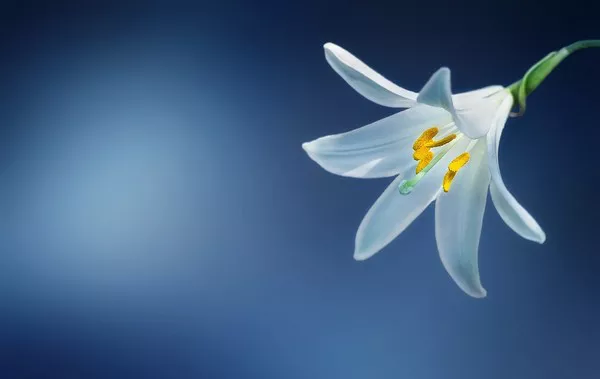Gardens and outdoor spaces don’t need to be flooded with sunlight to bloom with beauty. Shade-loving flowers, also known as “shade plants,” thrive in low-light conditions and bring an enchanting touch to areas that receive limited direct sunlight. In this article, we will explore a diverse array of shade-loving flowers, including their unique characteristics, cultivation tips, and creative landscaping ideas that celebrate the elegance of these blooms in the shadows.
1. Understanding Shade-Loving Flowers
Shade-loving flowers are a group of plants that have adapted to flourish in areas with partial to full shade. While most flowering plants require abundant sunlight to produce blooms, these shade-adapted beauties have evolved to make the most of filtered light or dimly lit environments. From woodland gardens to shaded corners of urban landscapes, they add a touch of color, texture, and fragrance to spaces that might otherwise seem barren.
2. Top Shade-Loving Flower Varieties
Bleeding Heart (Dicentra spectabilis): This delicate perennial features heart-shaped flowers that dangle gracefully from arching stems. The pink, white, or red blooms add a romantic and ethereal charm to shade gardens.
Impatiens (Impatiens walleriana): Impatiens are popular annuals known for their vibrant colors and prolific blooming. They come in a wide range of shades and are excellent for adding splashes of color to shady spots.
Astilbe (Astilbe spp.): With their feathery plumes in shades of pink, white, and red, Astilbes create a striking contrast against their lush green foliage. They are a staple in shade gardens and add a touch of elegance.
Lily of the Valley (Convallaria majalis): These small, bell-shaped, fragrant flowers are a classic shade-loving choice for ground cover. They thrive in moist, shaded areas and spread gently, creating a beautiful carpet of green and white.
Hosta (Hosta spp.): Known for their attractive foliage, Hostas are shade-loving perennials that come in various shapes, sizes, and colors. Some Hostas also produce delicate blooms in shades of lavender, white, or blue.
Fuchsia (Fuchsia spp.): Fuchsias are tender perennials that produce stunning pendant flowers in vibrant colors, making them an excellent choice for hanging baskets and containers in shaded areas.
3. Cultivation Tips for Shade-Loving Flowers
Choosing the Right Location: Although shade-loving flowers thrive in low-light conditions, it’s essential to select the appropriate type of shade for each plant. Some shade-loving varieties prefer dappled sunlight or morning sun, while others thrive in full shade. Observe the lighting conditions in your garden to determine the best placement for each flower.
Soil Preparation: Most shade-loving flowers prefer well-draining, humus-rich soil. Prior to planting, amend the soil with organic matter such as compost to improve fertility and drainage.
Watering: Shade gardens often retain more moisture than sunlit areas. However, it’s crucial to water plants appropriately and avoid overwatering, as excessive moisture can lead to root rot. Regularly check the soil’s moisture level before watering.
Mulching: Applying a layer of organic mulch around shade-loving flowers helps retain soil moisture, suppress weeds, and maintain a stable soil temperature.
Fertilizing: While shade-loving plants may not require as much fertilizer as their sun-loving counterparts, providing a balanced, slow-release fertilizer during the growing season can boost their health and blooming potential.
4. Designing Shade Gardens
Creating a shade garden can be a rewarding endeavor, offering a tranquil retreat and an opportunity to showcase the beauty of shade-loving flowers. Here are some design ideas to maximize the allure of these elegant blooms in your shaded outdoor space:
Layering: Utilize different heights and textures by incorporating a mix of shade-loving flowers, shrubs, and ground covers. Plant taller varieties towards the back of the garden and progressively shorter ones towards the front.
Color Harmony: Select a color scheme that complements the natural surroundings and evokes a sense of calmness. For instance, combine soft pastels like pinks, purples, and whites for a serene atmosphere.
Focal Points: Introduce eye-catching focal points, such as sculptures, water features, or decorative planters, to draw attention to specific areas of the garden and create a sense of balance.
Pathways: Design meandering pathways through the shade garden to encourage exploration and appreciation of the diverse flora. Natural materials like gravel or wood chips can add a rustic touch.
Seasonal Interest: Choose shade-loving plants that bloom at different times throughout the year to ensure your garden remains visually appealing in all seasons.
5. Benefits of Shade-Loving Flowers
Conservation of Water: Shade gardens generally require less water compared to sunlit gardens, making them environmentally friendly and contributing to water conservation efforts.
Reduced Maintenance: Many shade-loving plants are low-maintenance and require less frequent pruning and deadheading compared to sun-loving varieties.
Wildlife Attraction: Shade gardens can attract various wildlife, such as butterflies and birds, providing an opportunity to connect with nature and support local biodiversity.
Cooling Effect: A well-designed shade garden can create a cooling effect, making it an inviting space to relax during hot summer days.
6. Adapting Shade-Loving Flowers to Indoor Spaces
If you have limited outdoor gardening space, don’t fret! Many shade-loving flowers can also thrive indoors under the right conditions:
Indoor Lighting: Place potted shade-loving plants near east-facing or north-facing windows to provide the gentle, filtered light they need.
Humidity: Many shade-loving flowers appreciate slightly higher humidity levels. Consider using a humidity tray or regularly misting the foliage to create a suitable microclimate.
Soil and Drainage: Choose well-draining potting soil to prevent waterlogging, and ensure that your planters have drainage holes to allow excess water to escape.
Temperature: Maintain a stable indoor temperature, avoiding extreme fluctuations that can stress shade-loving plants.
Conclusion
Shade-loving flowers offer a splendid opportunity to cultivate beauty and charm in areas often overlooked in garden design. Their adaptability, diverse colors, and elegant forms make them an excellent choice for creating enchanting and peaceful outdoor spaces. Whether you have a shady corner in your garden or wish to add a touch of nature to your indoor environment, these graceful blooms will thrive, adding elegance and allure to your surroundings. Embrace the allure of shade-loving flowers, and let them enchant you with their understated yet captivating beauty.


